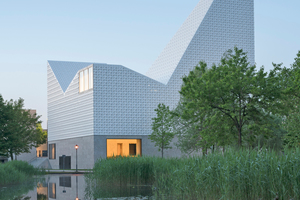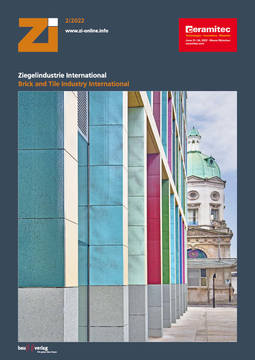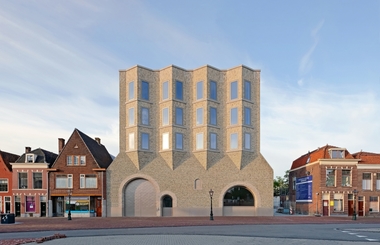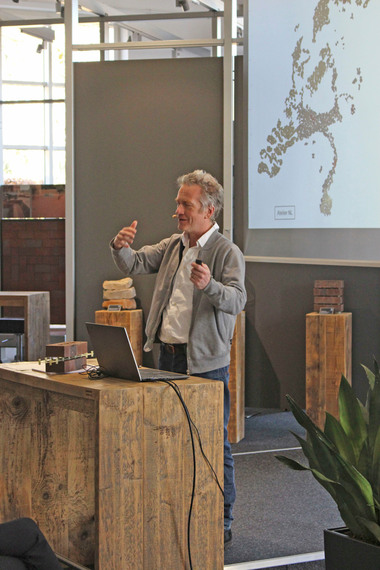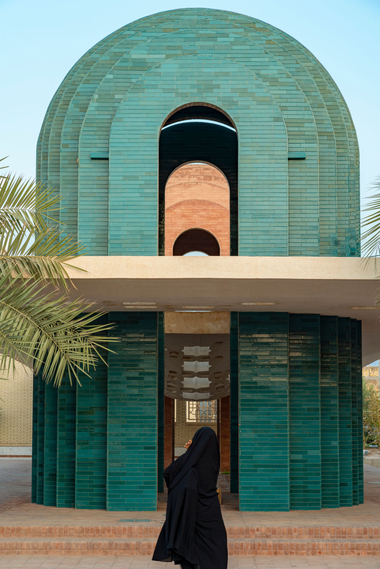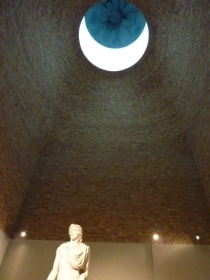Reduction to a decorative purpose?
Bricks are used in elaborately designed façades as well as in the construction sector. Does brickwork still have a chance in the long term in essential building, the making of houses? Or will the building material be reduced more and more to decorative purposes? The colleagues from the DBZ editorial team got to the bottom of these and other questions with Axel Frühauf from meck architekten, Munich, in a conversation for the DBZ podcast.
Axel Frühauf (AF): Yes, I think so. I remember a housing project that we had to redesign from a reinforced concrete to a brick construction. The construction was supposed to be red. You can see from this that buyers or builders definitely have a strong emotional attachment to brick. The familiarity with this construction is so strong that sometimes higher costs are accepted for it. The decision in favour of brickwork is often not only technical, but also emotional.
”Where do the skill and ability of architects and craftsmen show themselves more clearly than masonry?“
AF: First of all, you don’t always have to reinvent everything. Historically, there is profound knowledge about building with masonry structures. Basically, it’s about one of the main topics in architecture, the joining of building materials. Where is this more evident than in a masonry construction? Where do the skills and abilities of architects and craftsmen show themselves more clearly than in masonry?
AF: Of course you can. But you have to differentiate between the appearance of the surface and the load-bearing construction. One can discuss whether joining with prefabricated elements is also a type of masonry construction with oversized formats. But then, of course, there is a leap in scale from the individual stone to the element to the building.
AF: I think there are two groups of masonry stones that canbe divided. On the one hand, if the stone is really used as a structural building material, including its joining. On the other hand, when the stone is used to clad the building. In our work, we try to balance the many different possibilities that present themselves in a project-specific way. This has something to do with the location, with the people we are building for, but also with the culture in which we are building, and of course with the economic conditions. When it comes to cladding a building, there are few limits, the field is very wide. If, on the other hand, we talk about the loadbearing, structure-defining element of masonry, we quickly arrive at the brick. Brick is almost an all-rounder among masonry building materials in terms of its structural-physical properties.
AF: The use and joining of building materials is always a bit of research and optimisation. At the end of the day, that’s what drives us: We want to find the best solution in each case, which is a process of searching, designing, but also rejecting. There have always been projects where we have developed bricks with manufacturers that did not yet exist on the market. We experimented with the body and the firing, for example with ring kiln firing, until the brick had the shape, colour and texture that we imagined for the respective building task. For example, for our St. Nikolaus church centre project in Neuried. The façade of the church centre lives from the moving surface of this individually developed brick, from the large proportion of deliberately deformed bricks.
“The brick brings the human scale into a house.”
AF: I find it a bit disconcerting. Houses are built by people forpeople. There is a lot of “good spirit” in the process of building a house when people build it. That is also the fascination of bricks, that they ultimately come from the human hand. It has a format that you can easily grasp with one hand, that you can lay bricks with. The brick brings the human scale into a house. Of course there is the development towards digitalisation, but then the constructions in the future will look different from what we understand by brickwork so far.
AF: In recent years, the market has moved away from handmade houses towards prefabricated, element-based construction methods. This inevitably leads to the fact that there are fewer and fewer people who know the masonry trade. Every brickwork bears the mason’s signature, which stones are chosen, how are they combined with each other. That is very important for us in our projects to know which team we can work with. You can see the masonry quality. Yes, this craftsmanship is lost to a certain extent. All the more reason for us to try to preserve this culture of building, even if it has become more difficult.
“What i really appreciate is the honesty of a wall when it delivers what it promises. There´s something very reassuring about that.”
AF: The desire for solidity, honesty, for protection, especially in housing, is very human, I think. It only becomes sentimental when building is detached from the context, from the place of building. What I appreciate very much is the honesty of a wall, when it delivers what it promises. That is something very reassuring.
AF: Due to building physics and building regulations, we can no longer build visible masonry the way we used to with solid bricks. We have broken down the holistic nature of the wall into various individual aspects that require a volumetrically inflated wall construction with a very large wall thickness. Often there is not enough space for this, especially in residential construction. This is a very exciting topic. We are always trying to plan projects with solid bricks monolithically, but unfortunately we have not yet been able to realise a project. What we have built more often, of course, is monolithic construction with vertically perforated bricks or thermal insulation bricks.
AF: Not yet, but basically, I think masonry has exactly this strength in reuse, probably better than any other building material. Whereas it is certainly not easy nowadays to separate the different layers, which are often glued together, by type. In the past, when there were integral walls consisting only of stone and mortar, it was certainly even easier. As a Munich architect, one inevitably comes across Hans Döllgast and his post-war buildings such as the Alte Pinakothek, in which rubble bricks were used.
AF: As long as people are involved in the creation of buildings, I think masonry will remain with us. It becomes difficult when innovations are detached from the place of origin, when building materials are created elsewhere and have to be transported long distances to the construction site. Especially in the Corona Year 2020, however, a certain awareness has been raised about how we want to live today and thus how we want to build. If we agree on regionality, I am convinced that masonry will continue to be used in places where it was traditionally used.
Alle vierzehn Tage bespricht die Redaktion der DBZ-Deutsche Bauzeitschrift im Podcast relevante Fragen der Architektur, der Bautechnik und der Baupraxis und lädt Planer und Bauausführende ein, mitzudiskutieren.


